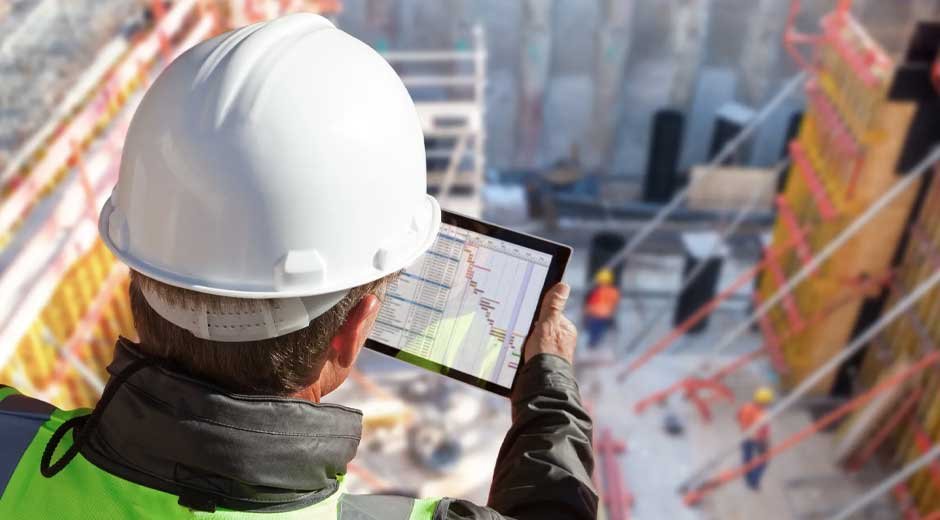Residential construction has never been a low-tech field, but the tools of the trade have shifted far beyond what anyone imagined a generation ago. Today’s contractors juggle not just hammers, drills, and measuring tapes but a full suite of software designed to keep jobs on track, clients informed, and teams connected. Each type of contractor has its own set of challenges, and the technology they lean on can make the difference between delays and smooth delivery.
General Contractors: Digital Command Centers
General contractors are the conductors of the entire project. They’re coordinating multiple trades, ensuring timelines align, and making sure budgets don’t balloon out of control. To do this effectively, they’ve embraced project platforms that act like digital command centers. Schedules, budgets, material orders, and labor updates are pulled into one dashboard, replacing the patchwork of spreadsheets and phone calls that once ruled the day.
This shift toward centralized platforms allows general contractors to have real-time visibility across jobs. If a shipment is delayed or a subcontractor has a scheduling conflict, adjustments can be made instantly instead of after the fact. The strength of this technology lies in its ability to turn chaos into clarity, offering contractors an organized view of a process that can otherwise feel unwieldy. It doesn’t remove the hands-on experience or judgment a contractor brings, but it gives them the kind of oversight that makes quick problem-solving possible.
Clients benefit, too, since many systems offer portals where homeowners can see timelines, sign off on change orders, and track costs. Transparency is now part of the job, and tech helps general contractors deliver it without adding hours to their workload.
HVAC Contractors: Keeping Things Cool With Smarter Tools
Heating and cooling systems are no longer one-size-fits-all, and neither is the work of the technicians who install and service them. These contractors need to track recurring maintenance, manage inventory for specialized parts, and keep customers updated when a unit is down in the middle of July. That’s where specialized platforms step in, including refrigeration service software to keep track of your techs, jobs, deliveries and more.
This software takes the scheduling headache out of the process. Instead of scribbling names on a whiteboard or managing endless text threads, HVAC companies can dispatch technicians with a few clicks. GPS tracking keeps everyone accountable, while integration with inventory systems means the right parts are on the truck before it leaves the warehouse.
It’s not just about efficiency—it’s about customer trust. When a homeowner’s air conditioning dies during a heat wave, the difference between getting a clear update through an app and being left guessing on the phone matters. Contractors who use these systems can offer reliability in a way that old-school methods simply can’t. The technology doesn’t take away the hands-on skill needed to diagnose and repair, but it clears out the logistical clutter that used to slow them down.
Builders: Streamlining the Big Picture
Custom home builders and residential construction firms manage projects with so many moving parts that a single misstep can snowball into costly delays. That’s why construction management software has become a standard part of the builder’s toolkit. These platforms bring together scheduling, budgeting, document storage, and communication in one place, reducing the friction that used to come with coordinating multiple subcontractors.
Instead of chasing down invoices or digging through email chains, builders can assign tasks, upload plans, and set reminders that keep the entire crew aligned. What once felt like juggling a dozen balls in the air now feels more like keeping a steady hand on the wheel. The software allows builders to focus on building while still having total visibility into project logistics.
This kind of technology also improves collaboration with architects, engineers, and homeowners. Updates are tracked automatically, changes to plans are recorded without confusion, and every decision leaves a digital paper trail. The effect is a smoother process that benefits everyone involved, from the tradespeople on-site to the clients who want reassurance that their investment is on track.
Electricians: Precision Through Digital Diagnostics
Electricians deal in precision. Every circuit, every breaker, and every panel has to be installed with exactness, not only for performance but for safety. Today, they’ve moved far beyond the days of paper schematics and manual testing. Diagnostic software and mobile apps now allow electricians to quickly trace problems, calculate loads, and cross-reference codes without flipping through thick manuals.
One major benefit is the integration of digital design tools with field devices. Electricians can overlay schematics onto tablets, annotate in real-time, and share updates instantly with the rest of the crew. When an issue arises—whether it’s a faulty connection or a miscalculated panel load—solutions are easier to find, saving both time and money.
Smart tools have also changed how electricians interact with clients. Homeowners increasingly want to understand the energy efficiency of their systems, and digital tools help contractors provide clear, data-backed answers. By showing usage patterns or identifying potential savings, electricians can add value that goes beyond installation and repair. The trust this builds can lead to long-term client relationships, which is worth just as much as the immediate job.
Plumbers: Connected Pipes and Smart Systems
Residential plumbing may look straightforward from the outside, but contractors know the reality is a maze of pipes, fittings, and regulations. Today’s plumbers have access to technologies that simplify both the planning and execution phases of their work. Leak detection sensors, smart water heaters, and even internet-connected fixtures have entered the conversation, requiring plumbers to adapt quickly to new demands.
What ties these advancements together is the ability to diagnose and manage issues before they become disasters. Mobile inspection apps let plumbers record notes, capture images, and generate reports directly from the job site. Cloud-based scheduling ensures customers don’t fall through the cracks, while digital invoicing helps payments arrive on time. It’s not just about fixing a leak anymore—it’s about offering a full-service experience that blends traditional know-how with modern expectations.
For residential contractors, adopting this technology doesn’t erase the craftsmanship of the trade. Instead, it lets them operate with greater speed and efficiency while presenting themselves as professionals who can meet the demands of increasingly tech-savvy homeowners.
Roofing Contractors: Eyes in the Sky
Roofers face unique challenges that other trades don’t—height, weather, and the sheer logistics of measuring and estimating massive surfaces. Technology has transformed their work, particularly with the use of drones. Instead of climbing ladders and risking injury just to measure a roofline, contractors can now deploy a drone that delivers precise measurements in minutes.
These aerial tools integrate with software that generates detailed reports, estimates materials, and even creates 3D visualizations for homeowners. The days of guesswork are gone, replaced by data-driven accuracy that makes bidding and execution more reliable. The safety benefits alone have made this technology a game-changer, but the customer-facing advantages are equally significant. When a homeowner can see a detailed report of their roof condition backed by aerial images, trust comes more easily.
Roofers are also adopting mobile platforms that sync field data with office systems, making the flow from estimate to installation more seamless. It’s a far cry from the clipboards and paper notes of the past, and it reflects the broader shift in residential contracting toward technology that reduces risks and increases transparency.
Wrapping Up
What stands out across these trades is how technology has become less about novelty and more about necessity. Each contractor type has its own set of headaches, and the right software or tool is what helps clear them. From drones flying over rooftops to apps managing technician schedules, the new generation of tech isn’t replacing skill or craftsmanship—it’s supporting it.
Residential construction may always involve long days, heavy lifting, and on-the-spot problem solving, but contractors are no longer working alone with their tool belts. They’ve got data, software, and digital visibility on their side, and that’s reshaping how projects come together. The best contractors are the ones who know that while the tools may look different today, the goal hasn’t changed: get the job done right and give homeowners confidence in the process.










